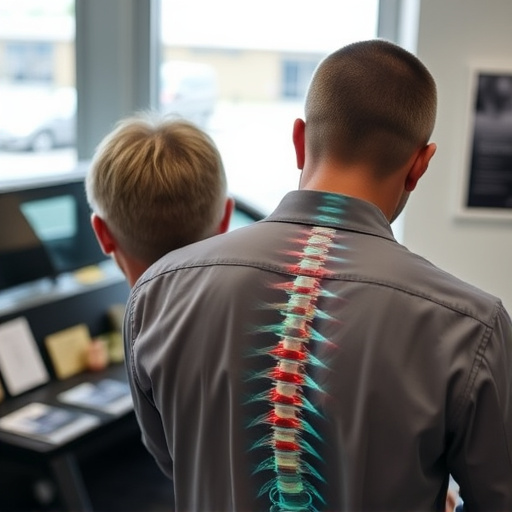Relocating intake air temperature sensors significantly improves temperature monitoring accuracy in automotive and industrial settings by capturing early-stage temperature variations close to the intake point. This process requires careful consideration of airflow patterns, moisture, debris, proper installation, and sensor calibration. Regular calibration, minimizing external factors, automated data logging, and real-time alerts ensure reliable readings. Advanced technologies like strategic intake air temperature sensors relocation enhance precision and reliability, enabling remote access via cloud-based platforms for informed decision-making in various industries.
In the pursuit of enhanced operational efficiency, improving temperature monitoring accuracy is paramount across various industries. This article explores three critical aspects for achieving this goal. We delve into the benefits and considerations of relocating intake air temperature sensors, offering a step-by-step guide to best practices for precise temperature monitoring. Additionally, we examine advanced technologies revolutionizing temperature accuracy in diverse sectors.
- Understanding Intake Air Temperature Sensor Relocation: Benefits and Considerations
- Best Practices for Accurate Temperature Monitoring: A Step-by-Step Guide
- Advanced Technologies Enhancing Temperature Accuracy in Various Industries
Understanding Intake Air Temperature Sensor Relocation: Benefits and Considerations

Relocating intake air temperature sensors can significantly enhance the accuracy of temperature monitoring systems in various applications, especially automotive and industrial settings. This strategy involves strategically moving the sensor from its original position to a more optimal location within the engine or ventilation system. One key benefit is improved measurement precision due to direct exposure to the specific air stream being monitored. By placing the sensor closer to the intake point, it can capture temperature variations at the early stages of the airflow, providing a more accurate representation of the incoming air’s conditions.
However, when considering intake air temperature sensors relocation, several factors must be addressed. These include ensuring minimal disruption to the airflow pattern and avoiding areas prone to moisture accumulation or debris buildup, which could contaminate the sensor readings. Proper installation techniques and materials are essential to maintain data integrity. Additionally, calibrating the sensor after relocation is crucial to guarantee accurate temperature measurements in the new position.
Best Practices for Accurate Temperature Monitoring: A Step-by-Step Guide

Best Practices for Accurate Temperature Monitoring: A Step-by-Step Guide
The first step in improving temperature monitoring accuracy is to assess your current setup and identify potential sources of error. One common issue is the placement of intake air temperature sensors. Relocating these sensors away from direct heat sources, cold spots, or areas with turbulence can significantly enhance measurement precision. Best practice suggests positioning sensors at a distance from other components that might influence readings, ensuring they measure ambient air temperature accurately. Regular calibration of sensors using standard reference temperatures is another crucial step to maintain accuracy over time.
Additionally, creating a consistent and controlled environment where measurements are taken is essential. This includes maintaining stable temperature conditions in the monitoring area and minimizing external factors like drafts or direct sunlight. Implementing automated data logging and real-time alerts for deviations can help detect any anomalies promptly. By following these best practices, you’ll ensure more reliable and accurate temperature monitoring across various applications.
Advanced Technologies Enhancing Temperature Accuracy in Various Industries

Advanced technologies are revolutionizing temperature monitoring accuracy across various industries, with significant improvements in precision and reliability. One such innovation is the strategic intake air temperature sensors relocation. By strategically placing sensors in key locations, such as closer to process heat sources or within specific environmental zones, these sensors can capture more accurate data. This enhanced placement allows for better representation of temperature variations throughout a system, leading to improved control and efficiency.
Additionally, modern sensor technologies offer higher resolution and faster response times, enabling real-time monitoring and quick adjustments. The integration of wireless communication and cloud-based platforms further facilitates seamless data transfer and remote access, empowering professionals to make informed decisions promptly. These advancements are particularly beneficial in sectors like manufacturing, pharmaceuticals, and food processing, where precise temperature control is paramount for product quality and safety.
The optimization of temperature monitoring accuracy is a multifaceted endeavor, encompassing sensor repositioning, adherence to best practices, and leveraging advanced technologies. Specifically, the strategic relocation of intake air temperature sensors has proven to yield significant benefits, enhancing overall system efficiency in diverse industrial settings. By following a step-by-step guide and staying abreast of cutting-edge innovations, organizations can ensure precise temperature readings, ultimately leading to improved processes and enhanced product quality.














